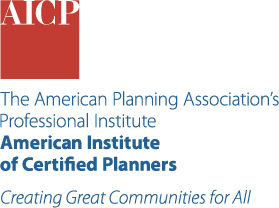Waterfront Park Plan and Design
City of Columbia
Columbia, SC
INTRODUCTION
The Columbia Waterfront Park Project ("Waterfront Project"), involves an historic and largely undeveloped site located on the western edge of the downtown street grid along the Congaree River. The "Waterfront Project" represents the progression of a vision which has its origins in urban planning designs for the City spanning well over a century which recognized that a waterfront park would enhance community well-being, promote environmental sustainability, provide recreational opportunities, and ultimately become a significant source of civic pride.
Critical to the vision of the Waterfront Project is the realization it must not be an isolated feature but one which is integrated with adjacent and proximal private development and redevelopment, and one that connects with other public amenities and assets. The vision is the Waterfront Project is supportive of other plans and initiatives which serve to integrate the educational, occupational, and leisure components of our lives and for which a waterfront park can be a place of cohesion. While the Waterfront Project is a forward-looking endeavor, it will necessarily recognize our natural history through the restoration of landscape features such as freshwater marshes and creeks while celebrating the cultural remnants of quarries, sawmills, brickworks and the Columbia Canal which supported the growth of our city from an idea on a plan to a thriving metropolitan area of regional significance.
As the state's capital city and home to the University of South Carolina and Fort Jackson, Columbia is the commercial, industrial, governmental, and education hub for South Carolina. In recent years, the city has transformed from its deep roots in textile manufacturing to a vibrant metropolis with a diverse economy and charming quality of life. A hotbed for millennial talent, the city is home to innovative entrepreneurs, progressive start-ups, and creative makers, alongside well-known global brands. With over 1.5 million people within 60 miles, Columbia's talent pool is deep, driven, and ready to make great things happen.
Located at the geographical center of the state, Columbia is positioned at the East Coast midpoint centered between New York City and Miami, FL. Charlotte, NC and Charleston, SC are both within a two-hour drive, and Atlanta, GA can be reached in a little over three hours as well. The City resides at the confluence of the Broad and Saluda Rivers, which combine to create the Congaree River. These rivers, along with nearby Lake Murray, provide for an abundance of park land and greenways, making our city a hot spot for outdoor recreation. Our warm subtropical climate makes for a popular year-round destination with mild winters, early springs, warm autumns, and hot summers.
The Columbia area boasts six diverse institutions of higher education, including the flagship campus for the University of South Carolina, whose attractive historic campus drew a record enrollment of 38,000 students this fall. Columbia is also home to two historically black colleges/universities (HBCUs), Benedict College and Allen University, which both reside in City's urban core. In the North Columbia region, we have Columbia College, a private liberal arts college along with Columbia International University, a faith-based college offering over 75 bachelors, masters and doctoral programs. Midlands Technical College is a public technical college with a student body of around 16,000, in multiple locations across Columbia, Richland, and Lexington.
Proudly called "the most military friendly community in America", Columbia and the Midlands region contains the second largest military presence in South Carolina. Fort Jackson is the U.S. Army's largest training base where half of the Army's soldiers (and all female recruits) go to attend their basic training. This presence is further augmented by the South Carolina National Guard, McEntire Joint National Guard Base, Department of Defense Contractors, military retirees and veterans, and the U.S. Army Reserves.
PROJECT BACKGROUND
Project Location: The site is approximately 80 acres bounded by the Congaree River to the west, Gervais/Senate Street to the north, Huger Street to the east, and Blossom Street to the South, and potentially an additional 16 acre parcel south of Blossom between Williams Street, the Congaree River, and the USC baseball stadium. The terrain, both wooded and open, includes some significant topography, including a steep-sided creek and a pond, with views of the river and the opposite bank.
Vision and Goals: The purpose of the Columbia Waterfront Park Project is to create a premier multi-purpose public park that enhances community engagement, promotes environmental sustainability, provides recreational, educational, and entertainment opportunities and supports economic development. It is also the intent the Park Project will enhance community well-being and quality of life, promote environmental education and conservation, provide passive and active recreational spaces for various activities (walking trails, sports fields, picnic areas, interpretive features, canoe and kayak put in/take out, amphitheater, and natural gardens and greenways), and inspire partnerships between private investors and public entities.
It is the intent of the City to incorporate a phased approach for programming and projects to include, those listed above to be seen as initial considerations; the City will seek the Firms selected to respond in the RFP phase to provide their more comprehensive vision for the entire project.
Existing Conditions:
- The Williams Street Extension is currently in design with anticipated completion in 2026. This new road will serve as a parkway, traversing the site from north to south, connecting the current ends of Williams Street from Senate to Blossom with 2 travel lanes, cycle tracks, and wide, tree-lined sidewalks. Williams Street extension will also provide connectivity to the existing downtown street grid at Pendleton, Greene and Devine Streets. (see Exhibit Williams Street Extension Project)
- A significant portion of the site is in the floodplain, and roughly a third of that is within the floodway. The site includes some delineated wetlands.
- The site includes overhead transmission lines, an underground sanitary sewer line, and associated easements.
The project specific scope of work shall include, but not be limited to the following:
- Site analysis utilizing existing surveys, plans, historical documents, and other resources
- Stakeholder and community engagement
- Master plan and park design, to include:
- Design a world-class park to become the primary riverfront destination in Columbia, with formal urban event spaces as well as smaller, passive park spaces;
- Provide access to the river for canoes, kayaks, paddleboards and other small watercrafts;
- Connect to the existing riverfront greenway to the north, Granby park to the south with a continuous greenway alignment that also provides connectivity to various destinations within the park;
- Identify potential developable sites, and suggest possible uses for such sites that will provide opportunities to live, work, and play at various times of the day and night to activate the park, including parcels adjacent to the site as well as destination uses within the park that may provide funding streams for operations and maintenance;
- Provide development concepts for parcels along Williams Street extension (parkway) that take advantage of the unique geography of the park and the "parkway", both in physical form and in function, to ensure the park will benefit from the development as will the development benefit from the park;
- Multimodal circulation to/through the site, for vehicles, bicycles, and pedestrians that provides for safe, comfortable access and provides parking that is adequate and subordinate to the pedestrian-oriented, active uses;
- Explore and recommend park governance and management structure(s) that ensure ongoing stakeholder participation, funding sources and options, and scalable operations and maintenance.
4. Environmental and regulatory compliance considerations
5. Cost estimates and phasing recommendations
6. Presentation of the conceptual plan to municipal officials and the public
7. Schematic design refinement and documentation of park design based on all of the above considerations.
It is expected the firm/team will develop and deliver a strategic master plan within the first twelve months of the contract. While not in the initial scope, it is imperative that the Firm/Team have the ability to produce full design development and construction documentation to continue through additional phases if the City chooses to do so.
The Firm and the City recognize the requested services may be adjusted or deferred based on scheduling, funding, and the City's desire to alter the scope of work.


